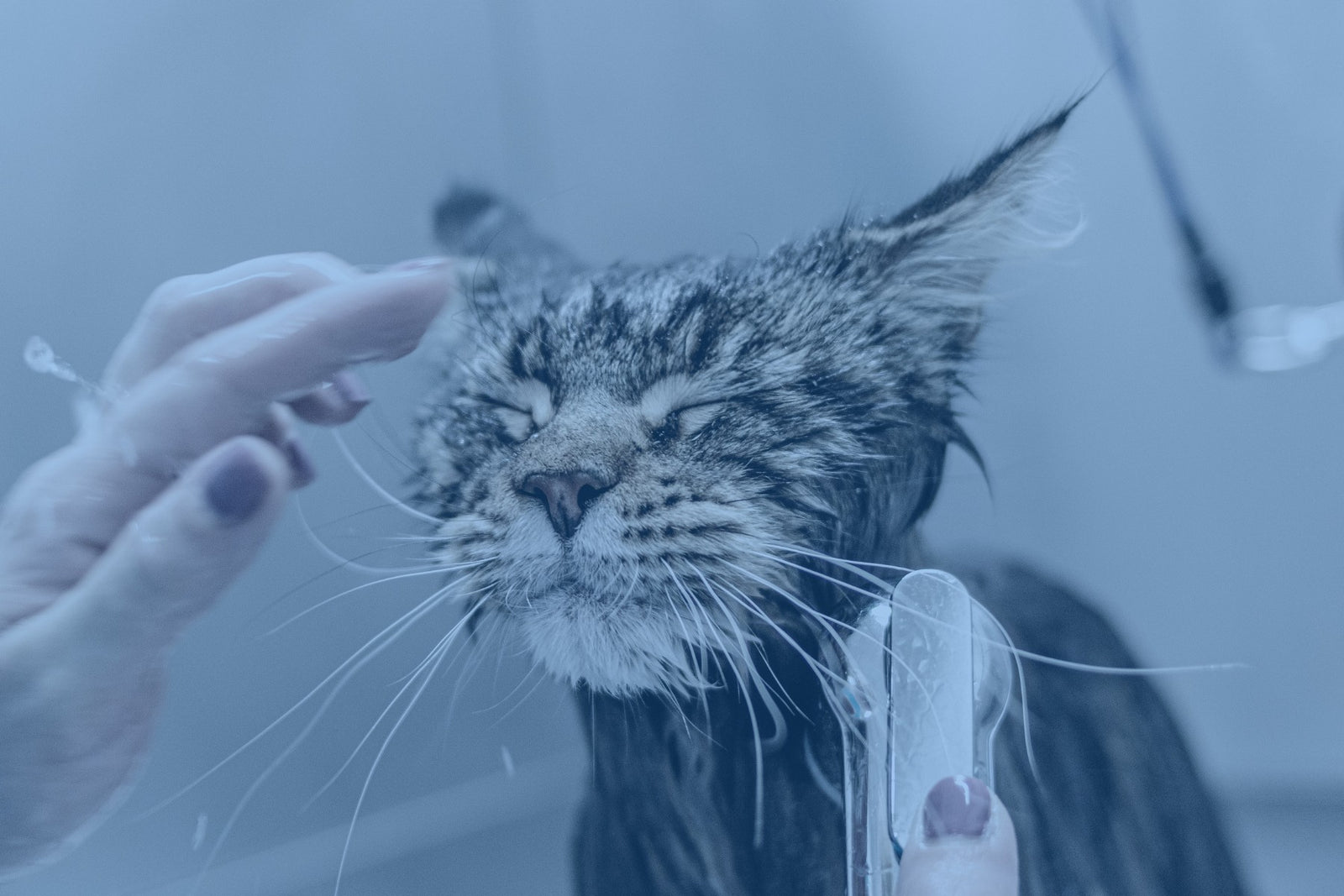October is National Pet Wellness Month!
Thirty years ago, the term Wellness may have brought up images of Birkenstock wearing, back to nature types in a sweat lodge, but that’s changed dramatically. Wellness has made inroads in a bastion of establishment medicine. When Fortune Magazine profiled the appointment of Dr. Tracy Gaudet to the Veterans Health Administration to spearhead a Wellness initiative, they reported “Gaudet is tasked with helping transform the organization into a system that focused on more than veterans’ medical problems: one that could manage health holistically and keep problems from arising in the first place.”
Almost every Pet Parent is aware of a growing trend called Pet Wellness. But what has been a relatively small niche up until now is about to take off. Interest in Wellness in the Human arena is now totally mainstream and that’s bound to translate to the pet world.
So, what is Wellness? What do we mean by this word? Wellness traces back to the 1650s, originally meaning "the opposite of illness." But the story of today's wellness movement really begins in the 1950s. Generally, wellness refers to the effort to stay healthy. It’s the concept of preventative health care that focuses on steps to remain healthy and avoid common illnesses.
Does wellness mean the same thing for pets as for humans? We talked to a ton of pet parents and vet experts. Wellness has a particularly strong appeal to pet parents, since it promises a double benefit—happier, healthier pets, and money saved due to fewer expensive vet visits to deal with common health problems.
Three Pillars of Pet Wellness
Just as in the Human world, there are three basic pillars of Pet Wellness: A healthy, nutritious diet, exercise, and maintaining a healthy weight. Each one is good by itself, but all 3 together are best—the truly Holistic approach.
Healthy weight is a key because obesity in pets, as with humans, is growing and it contributes to so many different health problems. A study by the Association for Pet Obesity Prevention says that 53% of dogs and 58.6% of cats are overweight or obese. While that’s still lower than Humans at 69%, it’s alarming nonetheless.
Obesity contributes to a startling list of health problems including Osteoarthritis and joint and bone problems, Type 2 Diabetes, and high blood pressure which can contribute to heart disease and kidney disease. According to experts, obesity can reduce a pet’s lifespan by 2.5 years! Some breeds are more prone to obesity, including Labrador Retrievers, Cairn Terriers, Cavalier King Spaniels, and Cocker Spaniels. Obesity is more prevalent in households with only 1 pet, perhaps because of less pet play.
Manufacturers have responded with a range of products for pet parents to fight obesity and help their pets maintain a healthy weight. Companies have developed specific weight maintenance foods. Another approach is bowls that slow down eating. Like with humans, slower eating allows the pet more time to feel full, and possibly eat less. And there are a number of toys that require the pet to work to get at a treat.
Many experts maintain that the simplest method is careful portion control -- measuring food precisely and factoring in the calories of treats when looking at total daily calorie intake for the pet.
But beware the “Bridget Jones” syndrome. Dr. Franklin McMillan, clinical professor of medicine at the Western University of Health Sciences published a study in the Journal of Veterinary Behavior about this phenomenon. Some animals may engage in “emotional” eating—e.g. eating not just to quell hunger, but to reduce anxiety, boredom, and depression and fill an emotional need. In this case of an emotional eater, cutting back on the pet’s food too drastically could worsen the situation by taking away the animal’s coping mechanism and making the animal even more unhappy—and even hungrier.
Exercise is another key factor in maintaining healthy weight -- just like with humans the best way to lose weight or maintain healthy weight in pets is a combination of both a sound diet and exercise.
Of course the amount of exercise that is right for a particular dog depends on factors like breed, age, and general health. But most dogs need more exercise than just a walk or two around the block to do their “business.” They could benefit from much longer walks and / or jogs. According to the ASPCA “Most dogs benefit enormously from daily aerobic exercise (exercise that makes them pant, like fetch, tug, running and swimming), as well as at least one half-hour walk. Some pet parents make the mistake of assuming that if a dog has access to a yard, she’s getting exercise. But your dog doesn’t run laps by herself in your yard—or do much of anything besides waiting for you to come outside or let her back inside.”
Studies show that the benefits of exercise go beyond weight maintenance and include mental stimulation, reduction of aggressiveness, and increased trainability.
But plenty of exercise is not always possible for all pet parents, because of busy schedules and weather issues. Manufacturers are trying to address this with everything from pet treadmills to “exercise” toys that make the pet work, and expend calories, to get to a treat.
Aside from weight maintenance, a healthy diet is an important part of Wellness. A person or pet can look trim and not overweight, but not be eating an optimal healthy diet. Like with Humans, our understanding of what constitutes a healthy diet can change over time, and there isn’t always a consensus among various experts.
Some big trends in pet diets right now include Raw diets, Grain-Free diets, Limited Ingredient diets, and Freeze-Dried or Dehydrated foods that haven’t been “over-cooked.”
Some experts believe that with a good healthy diet, there shouldn’t be a need for vitamins and supplements for most pets, while others maintain that even with a healthy diet there is a benefit from adding additional vitamins, minerals, or nutrients. Some of the most common pet supplements overlap with the human world including fish oils to help with skin and coat issues, Glucosamine and Chondroitin to support bone and joint health, and Pro-Biotics for digestive health.
Practice Good Pet Hygiene for Total Wellness
Another big wellness factor for pets is basic hygiene. As humans, we generally brush our teeth, bathe, and perform other hygienic practices out of routine habit. This is just as important for our pets, but can be a little trickier to implement. But many vet visits are easily prevented with some basic regular hygiene.
To start with, Dental Care is a big trend in Pet Wellness. Originally most pet lovers were primarily concerned with “dog” breath, but today there is a much greater understanding of the benefits of healthy teeth and gums. Infections in the mouth can travel to other parts of the body, and the effects can be serious including weakened heart muscle tissue. Many more pet parents are now bringing dogs in for annual or bi-annual cleanings, and many are considering additional ongoing dental care between cleanings.
As you would expect, there’s been a rapid expansion of Dental Care products from pet manufacturers. This category was once comprised mainly of toothbrushes and pet-specific toothpaste for a relatively small group of consumers willing to use them. Then Greenies burst onto the scene demonstrating that a much broader range of pet parents wanted to support dental health. Soon an array of products followed including wipes, gels, and water additives. Many Veterinarians maintain that brushing is best, followed by wipes that provide some physical friction to remove plague and prevent tartar buildup.
Our TrueBlue Fast and Fresh Dental Wipes are a great solution… effective like brushing, but considerably easier to do for most Pet parents.
An area that may follow the growth trend of Dental Care is Ear Care. Ear Infections are the #1 cause of vet visits -- yet most ear infections are preventable with a little bit of maintenance. As Dr. Matt Smith DVM says “Clean ears are healthy ears…. They are much less likely to get infected”. Ear Wipes can remove dirt and debris from the ear flap, so that they don’t fall into the ear canal and cause infection.
Our TrueBlue Super Easy Ear Wipes make keeping the ears clean a breeze. Many pet parents find that ear cleaning liquids and powders are extremely difficult and messy to administer. Our wipes are easy to use and much less messy than many alternatives.
Keeping a dog’s skin healthy is another aspect of Wellness. In the Human world, we think of shampoos and conditioners as hair care, but for a dog these are also related to skin care since they are used all over the dog’s body. A good shampoo will clean the dog’s coat without stripping away the natural oils that keep the skin moist. The right shampoo can help prevent itchy, irritated skin. And dogs can benefit from a Conditioner, not only to keep the coat smooth and soft, but also to add moisture to the skin.
The Bottom Line
“Wellness,” intoned Dan Rather in November 1979, introducing a “60 Minutes” segment on a new health movement known by that name --“There’s a word you don’t hear every day”. More than four decades later, Wellness is, in fact, a word that Americans might hear every day, or close to it. You can sign up for your company’s Employee-Wellness program, enjoy a Wellness spa treatment or even plan some “Wellness Tourism” for your next vacation.
For our pets, wellness comes down to taking care of the basics: Nutrition, Exercise, Weight Control, and Good Hygiene. At TrueBlue, our mission is to create all-natural products that are safe, effective, and convenient so your companions can live long, happy, and healthy lives.




